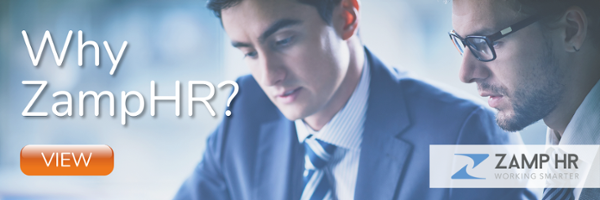A successful business does not remain static. Your eventual goal, regardless of industry, is to grow and expand, offering your goods and services to an ever-increasing array of customers and markets. Being a small business owner isn’t easy, though. Every day you’re faced with a cavalcade of elements that need managing, including your company’s HR functions.
Considering HR’s complexity and time-consuming nature, it’s sometimes better to outsource as much of your human resources workload as possible. But which outsourcing model should your business choose? Today, we’ll discuss the confusing difference between PEOs and EORs, two very different third-party HR models.
What Is a PEO?
A PEO, or “Professional Employer Organization,” is a third-party entity that co-manges critical aspects of your HR footprint alongside your in-house leadership.
PEOs are capable of shouldering a large chunk of your critical HR tasks such as the completion of payroll, setting up and administering benefits packages, FMLA administration, handling workers comp, compliance, and filling your company’s employment taxes.
One of the biggest advantages of using the PEO model is its superior access to health insurance and other benefits. The size of the PEO company is based on its overall client footprint, meaning they are considered a large entity when it comes to insurance eligibility.

What Are EORs?
An EOR, “Employer of Record,” shares many similarities with a professional employer organization. For example, an EOR can handle many of your office’s ongoing HR functions such as payroll, benefits administration, unemployment benefits, tax requirements, compliance-related duties, employee timekeeping, and general administrative duties. There is one key difference, however: the EOR is not a co-employer.
The EOR offloads a significant portion of the partner business’s liability and legal responsibility. That’s because the EOR serves as the legal employer for the partner business’s workforce.
Why Are PEOs and EORs Confused So Often?
There seems to be little difference between the PEO and EOR models at a cursory glance. Both offload a similar array of HR-centric tasks while still leaving you with the proper authority and autonomy to run the business’s day-to-day operations. So why does confusion surrounding the difference between PEOs and EORs persist?
It’s due in great part to the similarities between the two. Under each model the third-party assumes responsibility for the bulk of your company’s HR tasks. Another reason is the terminology involved when discussing PEO versus EOR.
Based on our previous discussion, an EOR is an employer of record company, not to be confused with being the employer of record. An employer of record is the business entity files employment taxes and processes payroll withholdings. Confusion enters the mix because a PEO acts as an employer of record, which is different from being an Employer of Record.

What are the Key Differences Between the Two?
While both methodologies utilize a third party to take care of all the significant elements of your HR workload, the one defining difference is their respective level of legal involvement. The PEO is a co-employer, meaning that although they don’t assume additional liability, they are a great long-term HR solution. EORs, on the other hand, assume legal liability on your behalf.
Choosing the Best HR Model for Your Business
Given the difference, which outsourced HR model is right for you?
The EOR is a great choice for larger entities that don’t expect much future growth. Their primary concerns are utility and liability. A PEO, however, is the ideal choice for smaller business looking to increase their service footprint. A PEO can help you scale up your operations more quickly and efficiently than an EOR can.



